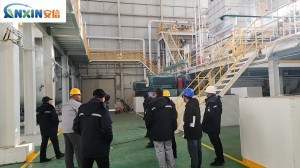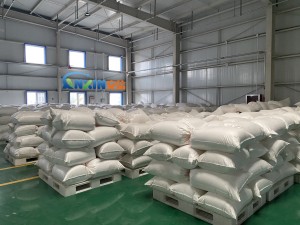Hydroxypropyl methylcellulose (HPMC) is a commonly used cellulose ether. Due to its excellent thickening, film-forming, water-retention, and stabilization properties, it is widely used in building materials, pharmaceuticals, food additives, and daily chemical products. As its use continues to expand, increasing attention is being paid to the environmental issues associated with its production and disposal.
1. HPMC Raw Materials and Renewability
The primary raw material for HPMC is natural cellulose, typically derived from wood pulp or cotton fiber. These raw materials are renewable biomass resources and are more sustainable than petrochemical-based materials. From a raw material perspective, HPMC does not pose a significant environmental burden. However, it is worth noting that excessive deforestation in the raw material supply chain may impact ecosystems. Therefore, sustainable management of the raw material supply chain remains crucial.
2. HPMC Production Process and Potential Environmental Impacts
The production of HPMC involves multiple steps, including alkalization, etherification, washing, and drying, involving etherifying agents such as methyl chloride and propylene oxide. If these chemicals are not handled properly during the production process, they may have environmental impacts:
2.1. Waste Gas Emissions
The etherification reaction may produce a small amount of organic waste gas. If the company’s waste gas purification system is inadequate, VOC (volatile organic compounds) emissions can pollute the atmosphere.
2.2. Wastewater Issues
The production process requires numerous washing steps, and wastewater may contain alkali, salts, and organic residues. If discharged directly without effective treatment, it will pollute the aquatic environment.
2.3. Energy Consumption and Carbon Emissions
The drying process typically requires high energy consumption, and the use of fossil fuels can indirectly contribute to greenhouse gas emissions.
Currently, many large HPMC manufacturers have introduced recycling and environmentally friendly treatment processes, such as waste gas absorption recovery systems and biochemical + membrane wastewater treatment processes, significantly reducing adverse environmental impacts.
3. Environmental Performance of HPMC During Use
During use, HPMC exhibits excellent biocompatibility and safety, and is widely used in the pharmaceutical and food industries. It is non-toxic and non-irritating, and does not produce any environmentally harmful byproducts during normal use. Unlike some synthetic polymers, HPMC poses virtually no significant environmental pollution issues during its application phase.
4. Disposal and Environmental Impact of HPMC
As a water-soluble polymer, HPMC is also relatively environmentally friendly during its disposal:
4.1. Biodegradability
HPMC belongs to the cellulose ether family and can be degraded by some microorganisms in the natural environment. Its molecular structure retains some of the properties of natural cellulose, making it more easily decomposed than traditional synthetic polymers such as polyethylene and polypropylene.
4.2. Environmental Risks After Disposal
If HPMC enters the environment with wastewater, it may increase the organic matter load in the water in the short term, thereby depleting some dissolved oxygen, but the overall environmental risk is low.
4.3. Incineration
HPMC decomposes primarily into carbon dioxide and water vapor during high-temperature incineration, without producing persistent organic pollutants. Therefore, the environmental impact of its final disposal is relatively minimal.
5. Improvement and Sustainable Development
Although HPMC presents a relatively low overall environmental risk, further optimization is needed in the production process:
Promote clean production processes and reduce the use of organic solvents;
Strengthen the construction of wastewater and waste gas treatment facilities to ensure compliance with emission standards;
Develop low-energy drying technologies to reduce carbon emissions;
Establish green supply chain management to ensure the sustainability of raw material sources.
In the future, with the development of green chemistry and the circular economy, HPMC production will become more environmentally friendly and sustainable.
The production and disposal of HPMC do present certain environmental issues, primarily related to waste gas, wastewater, and energy consumption during the production phase. However, in terms of raw material renewability, safety, and biodegradability during disposal, HPMC is more environmentally friendly than many traditional synthetic polymers. By improving processes and strengthening environmental management, its environmental impact can be further reduced, enabling HPMC to play a broader role in the future while also balancing green development and sustainability.
Post time: Aug-27-2025

